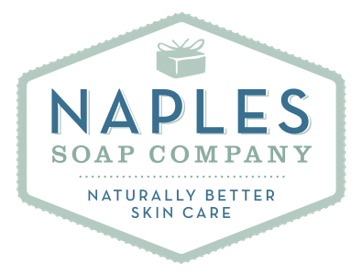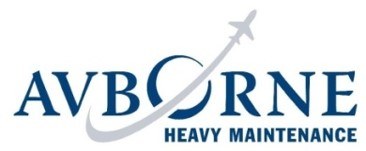Churn
July 26, 2021
“Happy Day Before Your Birthday”
Every year, I get two calls on the day before my birthday.
One is from Will, a gentleman I’ve purchased several cars and trucks from.
He works for one of the best dealers in the US.
I also get a call from another car dealer salesperson, Joe, who works for another dealer I haven’t purchased a car from in many years. Another stellar auto dealer. I also get cards and calendars in the mail from both, and they both tell me they want to be among the first to wish me a happy birthday, hence, the call a day early.
A gimmick, a stunt, a ploy? Perhaps, but I believe they are sincere.
Why, because they get it.
Nice work, guys. Two different dealerships, 1500 hundred miles apart, but they both understand that their job is not just selling, and pointing out the features of a vehicle, but offering friendship, regular communication, and simply just staying in touch. That way, when I’m ready to purchase the next vehicle, I think of them. And I do. And it works.
For both dealers, for me as a customer, their churn risk is near nil. Odds are I might buy more vehicles over my lifetime from them.
It costs far less to retain existing customers than to find, cultivate and engage new ones. It has taken companies far longer than it should have to finally admit this, figure it out, and devise strategies for reducing the customer churn rate — essentially the rate at which customers switch to another service provider. It is also known as defection, attrition, e.g.
Now, churn is most easily understood with subscriber-based products and services (cell phones, SiriusXM, Netflix, Peacock, cable TV, magazine subscriptions, LifeLock, even life insurance).
Companies assign lifetime and period values to their customers based on how long they will likely have them as customers, and how much revenue they will generate through the relationship.
Amazon, WalMart, Target, Costco — very aware of churn.
Brands have value, and despite what we want to believe, customers are often brand- or supplier- loyal and not agnostic.
Isn’t it smart for a car dealership, even a car manufacturer, to count on the value of going long — by keeping the customer and his or her loyalty and revenue stream?
Predictive modeling and other analytics are widely promoted as means by which companies can head-off the flight of their customers to competitive product and service providers. But how accurately can algorithms predict churn, or better yet, tell companies the qualitative as much as the quantitative?
Statistically, we can pinpoint the turnover in customers.
For example, in the insurance industry, agents and brokers know what percentage of clients they will lose or gain at renewal time. Auto manufacturers know by brand, which marques’ customers are the most brand loyal. Isn’t churn simply a matter of understanding weak points in service quality/product attributes and speaking to those, through a self-effacing, candid, competitive lens?
Mapping your company versus competitors, along two or three dimensions can yield very valuable, honest realities of how your customers see you.
Frequency of Contact
Customers need to be contacted and relationships maintained, but at what interval and at what cost? Having a simple e-newsletter, such as Constant Contact, e.g. or maintaining contact via social media and marketing and promotion, is one way. While it’s tempting for service and product marketers to want to sell more services and products, either directly, via trade allies, via affinity programs, or old-school suggestive upselling, the company must also get the truth from customers about how well they are doing, and how satisfied the customer is.
Measuring Satisfaction
There are numerous ways and techniques to ask customers questions and dig into the reasons why they are unhappy or thinking about migrating. Conversely, there are reasons why customers stick with the perceived pain of their current service provider. In the wireless service market, there are carriers labeled as follows, “they are expensive, but they have the best coverage,” “they are getting aggressive and offering lower rates, with a data plan, but their service isn’t as good as (insert name of large carrier here).”
If You Want A Friend, Be A Friend
Price, value, coverage, service quality, warranty, flexibility, blah blah.
Finding ideal price/value/convenience equilibrium means Netflix and Peacock flourish and grow while local cable companies and Blockbuster and Redbox fade, wither and die. Just as there are countless dimensions of the customer experience, and there are many factors which determine loyalty, there are other salient factors which determine churn.
Yes, we now admit and know wholeheartedly that it makes sense to keep customers by keeping them happy. The challenge is to keep them communicating honestly about what they like/want/need and what they don’t. Of course we want customers to keep our companies and brands “top of mind,” but we also want to have the communications consist of two-way dialogue, and exclusive of sales opportunities, advise as to the gap between the dimensions of service, price, quality, responsiveness, e.g. they are receiving, versus what they expect.
A customer who is valued and made to feel significant, and not made to feel like another number in a bureaucracy, can be a lifelong, even multi-generational relationship. No doubt, it’s a challenge to maintain intimacy between a huge company and a single customer, but it’s done successfully every day, with both online and B/A/M (brick and mortar) models.
There are wins for the customer.
Next time your current service provider (cable company, e.g.) asks to renew, or you have an issue with them, remind them that it makes good business sense to keep you as a customer. Tell them you can help them reduce their churn by staying aboard. Ask them to give you more and to let you pay less.
Odds are they will reward you in some way. Odds are you’ll stay with them as a customer.
You might even get a “day before your birthday” card.



































































































































































































